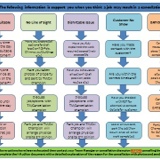Information
Return to Work knowledge check questionnaire
-
Engineer name:
-
Team:
-
Prepared by:
-
Location
-
Conducted on
Health & Safety Knowledge Check
Vehicle
-
Name 3 of the daily checks that you carry out on your van?
-
Who is responsible to ensure your van is safe for the road?
-
What is the max speed limit of your van on a dual carriageway that has a national speed limit?
-
Where would you locate the correct tyre pressure for your van?
-
When is it safe to make a phone call whilst driving?
-
What does telematics record on your van? Have you got access to the telematics App?
-
If your van is involved in an accident/incident or you notice a dent on the body work of your van, what should you do first?
Risk Assessment
-
When should a risk assessment be carried out?
-
What are the three steps you should take to deal with a hazard?
-
If a part of your ladder equipment can't be used for any reason, what should you do?
-
What PPE do you have to control drilling hazards?
-
What is a near miss?
-
If you encounter a near miss what should you do?
-
What should you do if your iPad fails during your working day?
Ladder Working
-
When connecting a cable to a dish does your ladder need to be eye bolted?
-
Where should your cowstail be placed on the ladder when working at height?
-
When on soft ground, what additional item should be used with your ladder?
-
Can your gravel bag be used as a replacement for your ladder mate?
-
How many points of contact should your ladder mate have with the ladder?
-
What should you do if you can't secure the ladder with an eyebolt?
-
In addition to PPE, List 3 items of equipment that must be used when working on a ladder?
-
How do you set up your combi ladders to use as a triple section combi ladder?
-
Where would you eyebolt an A frame combi ladder set up face on and side on to a wall?
Roof Working
-
What rungs of the ladder should the microlite be fitted to, when accessing a flat roof?
-
How many eye bolts are required when accessing a pitched roof?
-
At what angle does a flat roof become a pitched roof?
-
What additional equipment is required to access a dormer roof?
-
You are about to work on a flat roof that is only 1.5m wide, what piece of equipment is required to get to the area where work will be carried out?
-
What is the minimum distance between your working point and any edge, when working on a pitched roof?
-
How would you secure your CAT ladder after it has been installed safely on a roof?
-
When working on a flat roof, how close can you be to an un-protected edge before fall arrest equipment is required?
-
You are about to access a roof, you have completed a Risk Assessment. Before starting ANY work what should you do?
Manual Handling
-
What is Manual Handling?
-
What should be carried out prior to moving any load?
-
List three common injuries caused by manual handling?
-
Which way should you face prior to lifting and moving a load?
-
How many hands should be used when carrying ladders?
-
What PPE should be used at all times when carrying ladders or equipment?
Briefs and procedures
-
Where would you find all the current Health and Safety briefs and processes?
-
Where would you find the ladder, combi ladder and cable clipping hierarchy and understand how to use it?
Summary:
-
Reason for engineer being Absent from work? Any professional recommendations from medical experts to consider before completing practical observation or to support engineers return to work?<br><br>
-
Engineer Wellbeing and support? Is there any support the engineer requires that we can provide? I.e. Financial support, counselling etc.
-
Engineer Practical observation: What have you gone through with the engineer? <br><br>
-
Overall outcome & recommendations:
-
Engineer:
-
RTW Lead Signature:









